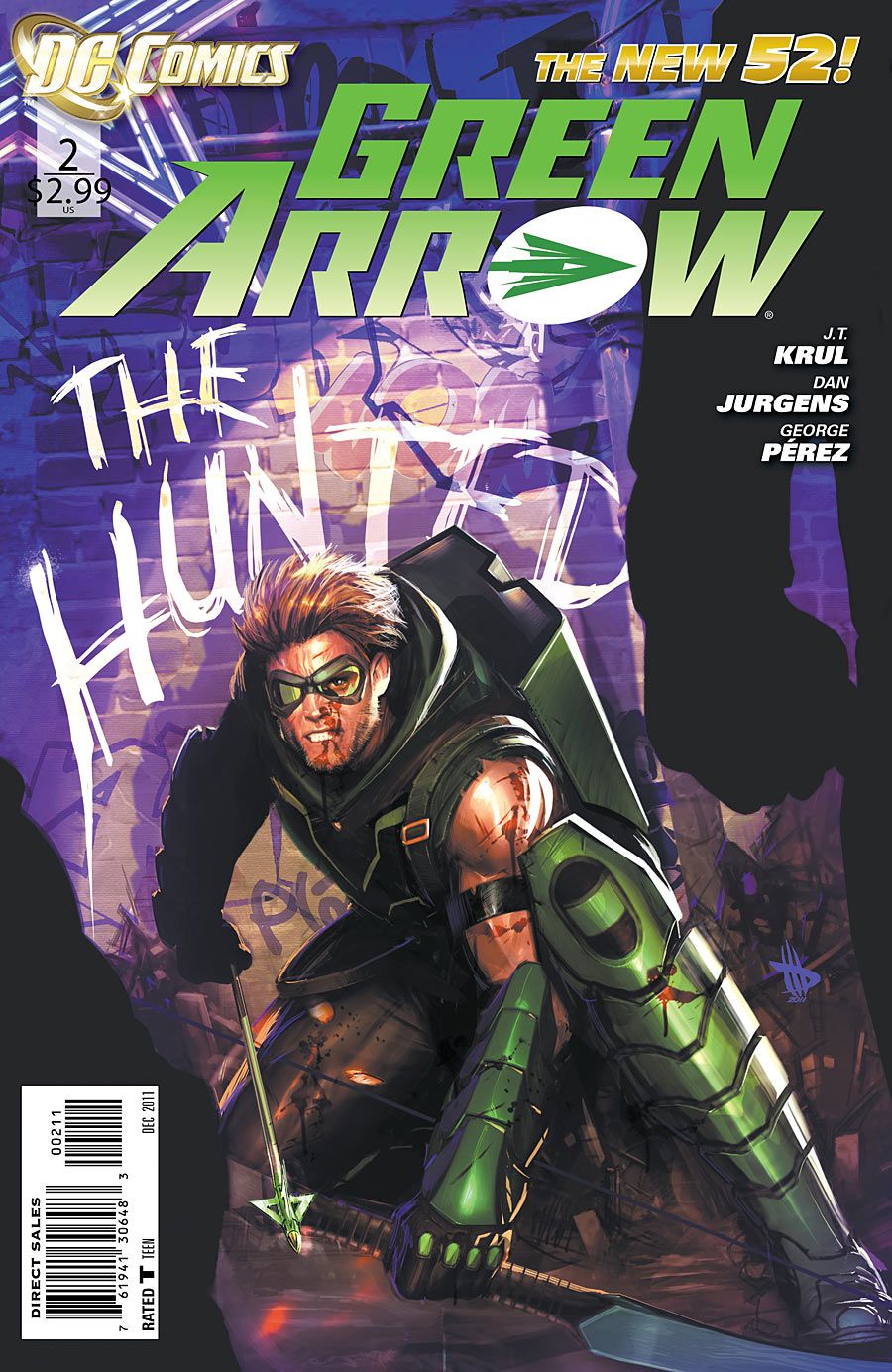What is "Green Arrow" about? I've read the second issue of the newly relaunched/rebooted series a few times and I'm not sure I know. Oliver Queen dresses up and fights crime with a bow and arrow under the name 'Green Arrow,' while avoiding his responsibilities at the family business, Q-Core (though no doubt using the company's resources to fund his superhero hobby). These things happen in various scenes in this comic and, yet, I don't know why Oliver Queen does anything he does. He doesn't seem to want anything except to not be a businessman and to obsess over the idea of fighting crime with arrows. The bad guys don't seem to have any reasons for what they do either. "Green Arrow" is, I guess, about superhumans who are good because they are good or bad because they are bad, all of whom are drawn by Dan Jurgens and George Perez.
If that's all there is to "Green Arrow," that makes it somewhat interesting as a concept: a pure superhero comic without any fuzzy grey areas. The hero is a hero because he's a hero and the villains are villains because they're villains. Nothing simpler and more conducive to simple superhero action. That makes for any deviations from this problematic, like a scene where some 'evil businessman' lectures Oliver for not taking his duties at Q-Core seriously. All this scene seems to convey is that the 'evil businessman' is an evil businessman and Oliver would rather play basketball and shoot arrows at superpowered women than do whatever it is he does at Q-Core. I suppose there's a certain honesty in exposing Oliver as nothing more than a childish fantasy made real, but it's hardly compelling or entertaining.
Oliver's single-minded simplicity is the only thing close to charm he has. When a group of bad guys kill a wannabe bad guy on video and make it public, all he can say is "They killed him -- and posted it online?" His body language doesn't suggest outrage, merely an inability to understand what happened. For a man who cares only about arrows and shooting them at 'bad people,' their motives are not only hard to fathom, they're practically alien. When one of his aides shows him a new defensive device (basically, an air bag), he, again, responds with a singular purpose: "Not bad. But can you fit it on the end of an arrow?"
The same sort of logic applies to the bad guys of the comic. They don't seem to want anything except to be 'bad' and to fight against 'good.' In this case, 'good' is Green Arrow. They don't wear costumes and the wannabe they beat up is enthusiastic, gives himself a code name, and wears a bright costume. But, he's not really bad in any way. 'Bad' in this comic is like 'cool:' either you are or you aren't, and that wannabe is not, so he gets beaten to death on YouTube.
With such basic, one-dimensional characters driving the book, Dan Jurgens and George Perez are the perfect artists. That sounds like an insult, but it's not meant as one. Since "Green Arrow" is a comic based around the concept of 'superhero comics' minimalized to their basic core (good vs. evil) without any nuance, Jurgens and Perez provide art that matches the writing perfectly. With Jurgens only doing layouts, the pages are more open than if Perez were designing them. Perez has a habit of overcluttering pages and this is a comic that avoids 'clutter.' At the same time, Perez's line work and detail is more closely identified by modern readers as 'classic superhero art.' His art looks like it's from the past, from our childhoods when comics were simply battles of good and evil without motive or a need for explanation.
"Green Arrow" #2 is, paradoxically, a difficult book to fully grasp because it's so remarkably simple. Superhero comics are never this uncomplicated and direct. There is no subtext, only text: Oliver Queen is Green Arrow because he's a good person and he fights villains that are bad guys because they're bad people. The only flaws are when motives are forced into the simple reality of the comic. Otherwise, "Green Arrow" #2 is as pure a superhero comic as you can get, for good or ill.

